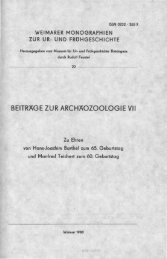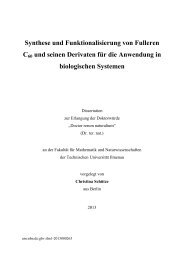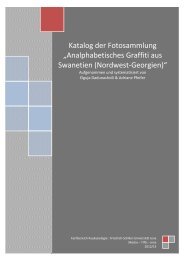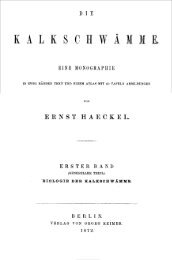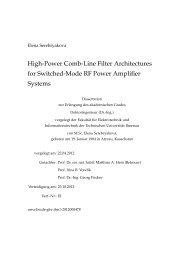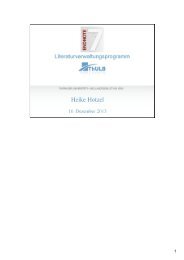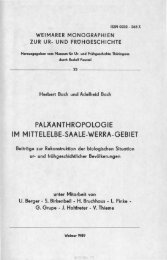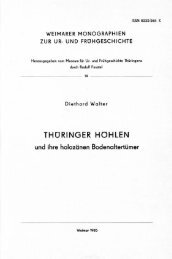Dissertation
Dissertation
Dissertation
Create successful ePaper yourself
Turn your PDF publications into a flip-book with our unique Google optimized e-Paper software.
|1.10 Intramolecular Photoredoxcatalysts|<br />
In addition, antenna like systems and other supramolecular structures for intramolecular electron<br />
and particularly energy transfer were investigated: [77]<br />
(AP) n P R D/A or AP B N P <br />
Working intramolecular photocatalysts, consisting of photocenter and catalyst to perform a<br />
complete half-reaction were developed very late in the case of water reduction or are still unknown<br />
as in the case of water oxidation: [35]<br />
P B N C Ox/Red H 2 O or P R Q/D/A C Ox/Red H 2 O<br />
It turned out that in addition to organic systems, especially oligonuclear coordination compounds<br />
(dyads, triads, tetrads, ...) possess ideal properties to investigate the desired processes in<br />
supramolecular systems and to reproduce concepts of nature.<br />
1.10.1 Oligonuclear Coordination Compounds<br />
The necessary charge separation for redox-catalysis can be generated with organometallic<br />
chromophores P which represents one component of supramolecular catalyst. In addition, a<br />
second metal center will serve as redox-catalyst C. The use of fine-tuned bridging ligands B will<br />
increase the range and thus the lifetime of the charge separation in the first place. Furthermore, it<br />
will allow for an unidirectional inner sphere electron transfer toward the second metal to allocate<br />
the electrons for consecutive reactions. In general, three different processes exist which transform<br />
the absorbed excitation energy into redox-energy that can be tapped by the catalyst metal (see<br />
figure 30): (a) energy transfer, (b) photoinduced electron transfer and (c) photoinduced charge<br />
separation.<br />
Electronic energy transfer (EnT) is equivalent to electron transfer between different intracomponent-LUMOs<br />
and parallel “hole transfer“ between different intracomponent-HOMOs via<br />
Förster and Dexter mechanisms and shifts the localization of excited state energy to an<br />
energetically lower lying excited state on a different component. Photoinduced electron transfer<br />
(PET) shifts an excited electron from a high intracomponent-LUMO (LUMO+1) toward a lower<br />
lying LUMO (Kasha’s rule) which is localized on a different component. This can be seen as a<br />
intraligand electron transfer process from a high MLCT+1-state which populates a lower MLCT-<br />
|42|



